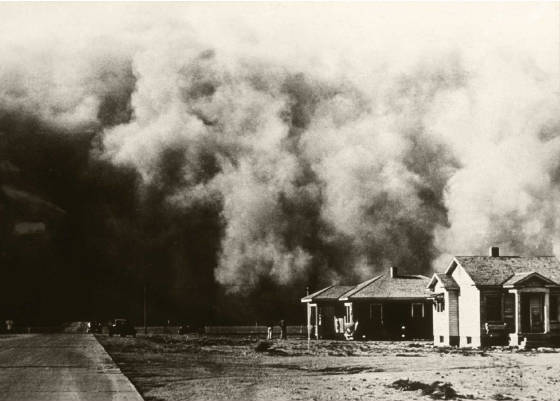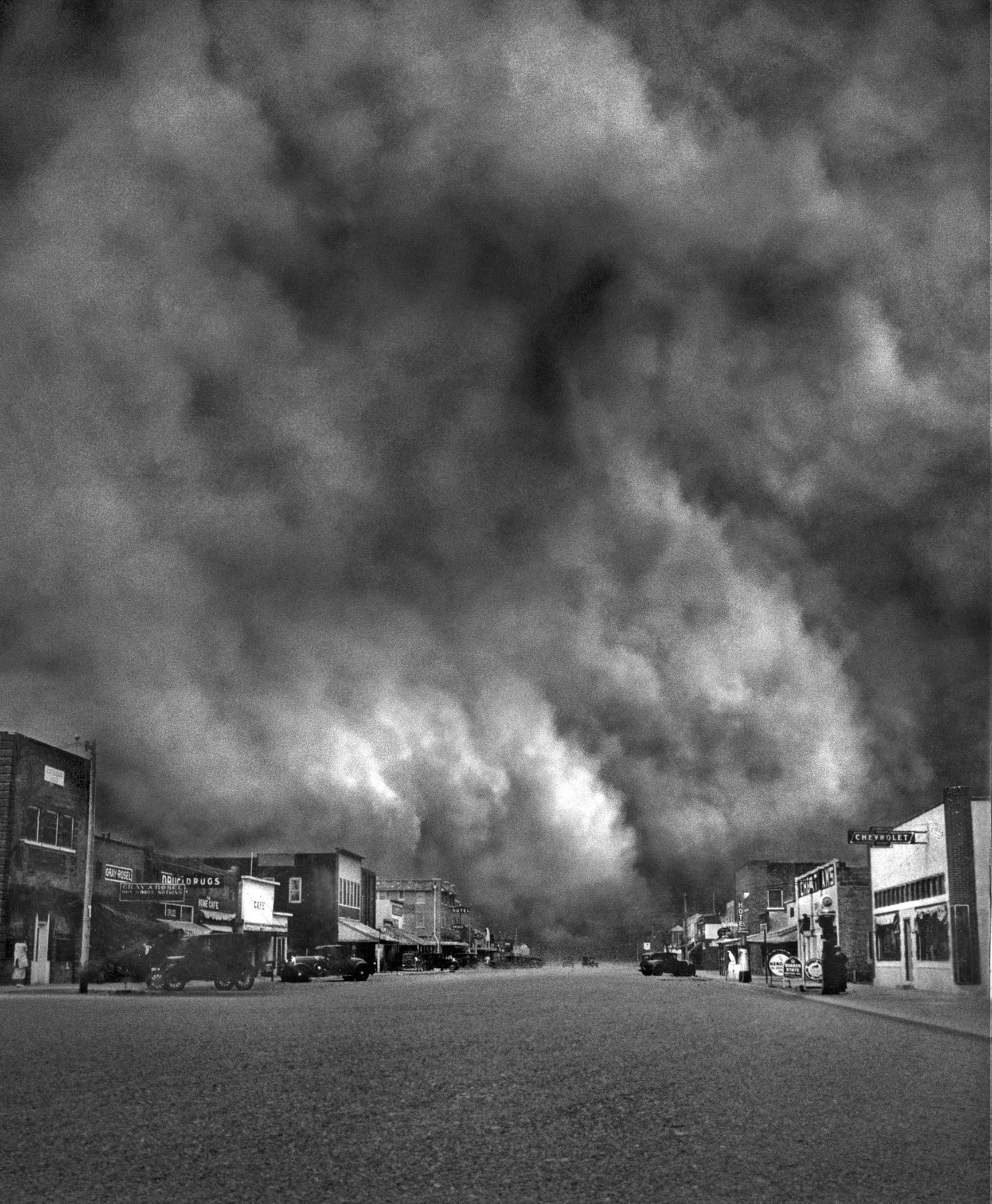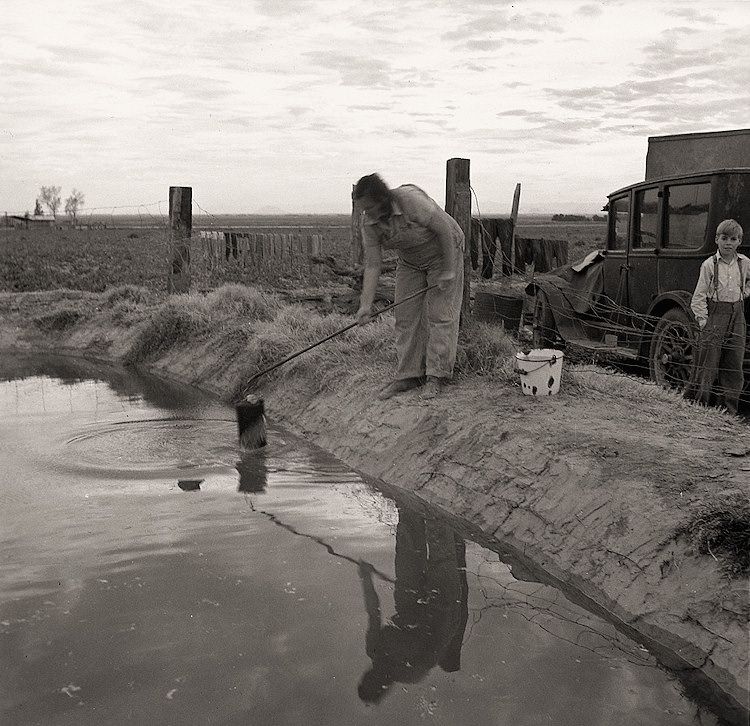In the 1930s, the los angeles welfare department decided to start deporting hospital patients of mexican descent. But the truth is that many things caused the great depression, not just one single event.
 Pin on CaliforniaDepression DaysWPA
Pin on CaliforniaDepression DaysWPA
The great depression that caused so much trouble in the world during the 1930s ended only with the boom caused by world war ii.

The dust bowl of the 1930s was caused by brainly. The great depression and the 1930s. The dust bowl was caused by farmers plowing the ground to deep and it would break the roots of grass wich held the dirt in place.but then winds started picking up loose dirt on the ground and. It is known throughout history that the cause of the great depression was the stock market crash of 1929, which is known as black tuesday, however, this is not the only cause.
The dust bowl was a severe dust storm that ravaged the southern plains in the 1930s, causing many residents of this region to lose their livelihoods and homes, and ultimately migrate to california. It was a period of drought and severe wind erosion in the southern and central plains, which was followed by economic depression. What is the most effective way to begin studying a lesson?
The dust bowl of 1930's was caused by drought and poor farming practices and and also the high temperatures in the region during this period had a very huge adverse effects on crops in the region. Which states were in the worst of the dust bowl? The dust bowl migration of the 1930s plays an important and complicated role in the way americans talk about the history of poverty and public policy in their country.
Dust bowl, in 1934, weather conditions and farming practices in the great plains combined to produce an ecological disaster called the dust bowl. The dust bowl was a soil erosion disaster that hit the southern great plains of the united states in the 1930s. Earthquakes erosion fertilizer runoff overgrazing drought and poor farming practices volcanic eruption.
One of the patients was a woman with leprosy who was driven just over the border. This ecological and economic disaster and the region where it happened came to be known as the dust bowl. Overconfidence in the stock market caused people to.
The dust bowl of the 1930s was caused by _____. The 1930's dust bowl in the great plains was caused by? The establishment of the soil erosion service was the first major federal commitment to the preservation of privately owned natural resources.
Economists can debate whether bank failures caused the great depression, or the great depression caused bank failures, but this much is undisputed: Severe drought and a failure to apply dryland farming methods to prevent the aeolian processes (wind erosion) caused the phenomenon. The run on america’s banks began immediately.
The dust bowl that forced many families on the road wasn’t just caused by winds lifting the topsoil. The dust bowl was a natural disaster that devastated the midwest in the 1930s. Heat waves are becoming more common, and intense heat waves are more frequent in the u.s.
Economists and historians point to the stock market crash of october 24, 1929, as the start of the downturn. The era became known as the legendary dust bowl. The areas most severely affected were western texas, eastern new mexico, the oklahoma panhandle, western kansas, and eastern colorado.
Even though the dust bowl survivors fled their homes out of desperation in search of a new place to live, many californians did not want the survivors immigrating to. When winds blew, they raised enormous clouds of dust. For american farmers however, the downturn began shortly after world war i ended, continuing mostly unabated for two decades.
West, although in many parts of the country the 1930s still holds the record for number of heat waves (caused by the dust bowl and other factors). For almost seventy years the story of white families from oklahoma and neighboring states making their way to california in the midst of the great depression has been kept alive. More and more dust storms had been blowing up in the years leading up to that day.
What circumstances conspired to cause the dust bowl? Problems > > > > > > > cultural psychology. The great depression lasted from 1929 to 1939 and was the worst economic depression in the history of the united states.
While the economic decline caused by the great depression played a role, it was hardly the only guilty party. With insufficient understanding of the ecology of the plains. The dust bowl was the crisis that took place on the southern great plains during the 1930s.
In 1932, 14 dust storms were recorded on the plains. The dust bowl drought of the 1930s was one of the worst environmental disasters of the twentieth century anywhere in the world. Lowdermilk's goal was to help avoid a repeat of the dust bowl.
1.) make up questions about the lesson. How many years did the dust blow on the high plains ? By 1934, it was estimated that 100 million acres of farmland had lost all or most of the topsoil to the winds.
According to the federal soil conservation service, the bowl covered 100 million acres in 1935. The dust bowl was caused by: 1 unsustainable farming practices worsened the drought’s effect, killing the crops that kept the soil in place.
The term dust bowl was suggested by conditions that struck the region in the early 1930s. Bank failures during the great depression. Click here for more facts about banks and bank failures during the great depression.
The dust bowl was a period of severe dust storms that greatly damaged the ecology and agriculture of the american and canadian prairies during the 1930s; The dust bowl got its name after black sunday, april 14, 1935. The dust bowl brought ecological, economical and human misery to america during a time when it was already suffering under the great depression.
The northern parts of the prairie were not affected as badly. In 1933, there were 38 storms. It was the worst drought in north america in 1,000 years.
But the dust bowl drought was not meteorologically extreme by the standards. By 1933, 11,000 of the nation’s 25,000 banks had disappeared. The drought, dust storms, and boll weevils that attacked southern crops in the 1930s, all worked together to destroy farms in the south.
Gregory, a history professor at. In his first 100 days in office, roosevelt addressed soil conservation, the key to turning around the dust bowl conditions, by creating the civilian conservation corps (ccc) and the soil erosion service. The area’s grasslands had supported mostly stock raising until world war i, when millions of acres were put under the plow in order to grow wheat.
The depression, dust storms, farming practices, terrible weather, low prices on farm products, over intense farming, and drought and wind erosion led to the dust bowl in the 1930s. Severe drought and a failure to apply dryland farming methods to prevent the aeolian processes caused the phenomenon. The devastation of agriculture prolonged the great depression.
The dust bowl, also known as the dirty thirties, was a period of severe dust stormsthat greatly damaged the ecology and agriculture of the american and canadian prairies during the 1930s; Three million people left their farms on the great plains during the drought and half a million migrated to other states, almost all to the west. The plains str… the plains str… agricultural economics , agriculture in an industrial economy.
Colorado, kansas, texas, oklahoma, and new mexico. Outside the dust bowl, where farms and ranches were abandoned, other farm families had their own share of woes. What were some causes and effects of the increased discrimination during the great depression?
Overgrazing, overplowing, severe drought, high heat and winds, grasshoppers and jackrabbits. Without crops to sell, farmers could not make money to feed their families nor to pay their.
 Cimarron County, Oklahoma, USA Dust bowl, Dust storm
Cimarron County, Oklahoma, USA Dust bowl, Dust storm
 FDR and the Dust Bowl (With images) Dust bowl, Erosion, Fdr
FDR and the Dust Bowl (With images) Dust bowl, Erosion, Fdr
 Squatter Camp March 1937. "Water supply Open settling
Squatter Camp March 1937. "Water supply Open settling
 Dorothea lange Shorpy historical photos, Dorothea lange
Dorothea lange Shorpy historical photos, Dorothea lange
 Pin on "House of Ill Fame" Production Design
Pin on "House of Ill Fame" Production Design
 20 Tragic Photos from America's Dust Bowl in the 1930s
20 Tragic Photos from America's Dust Bowl in the 1930s
 Pin on Great Depression/Dust Bowl to childhood
Pin on Great Depression/Dust Bowl to childhood
 photo by rothstein of dust Fighting sand. Childress
photo by rothstein of dust Fighting sand. Childress
 Dust Bowl Dust bowl, Dust storm, Devastation
Dust Bowl Dust bowl, Dust storm, Devastation
 Ken Burns Film The Dust Bowl to Debut on WSIUTV Dust
Ken Burns Film The Dust Bowl to Debut on WSIUTV Dust
 This photo was taken by, Dorothea Lange who took photos to
This photo was taken by, Dorothea Lange who took photos to
 The Dust Bowl, a documentary by Ken BurnsPart 2 My
The Dust Bowl, a documentary by Ken BurnsPart 2 My
 Pin by Erika Frances on Photography Dust bowl, Places to see
Pin by Erika Frances on Photography Dust bowl, Places to see
 The History Place Dorothea Lange Photo Gallery
The History Place Dorothea Lange Photo Gallery
 Dorothea Lange Dust Bowl The History Place Dorothea
Dorothea Lange Dust Bowl The History Place Dorothea


